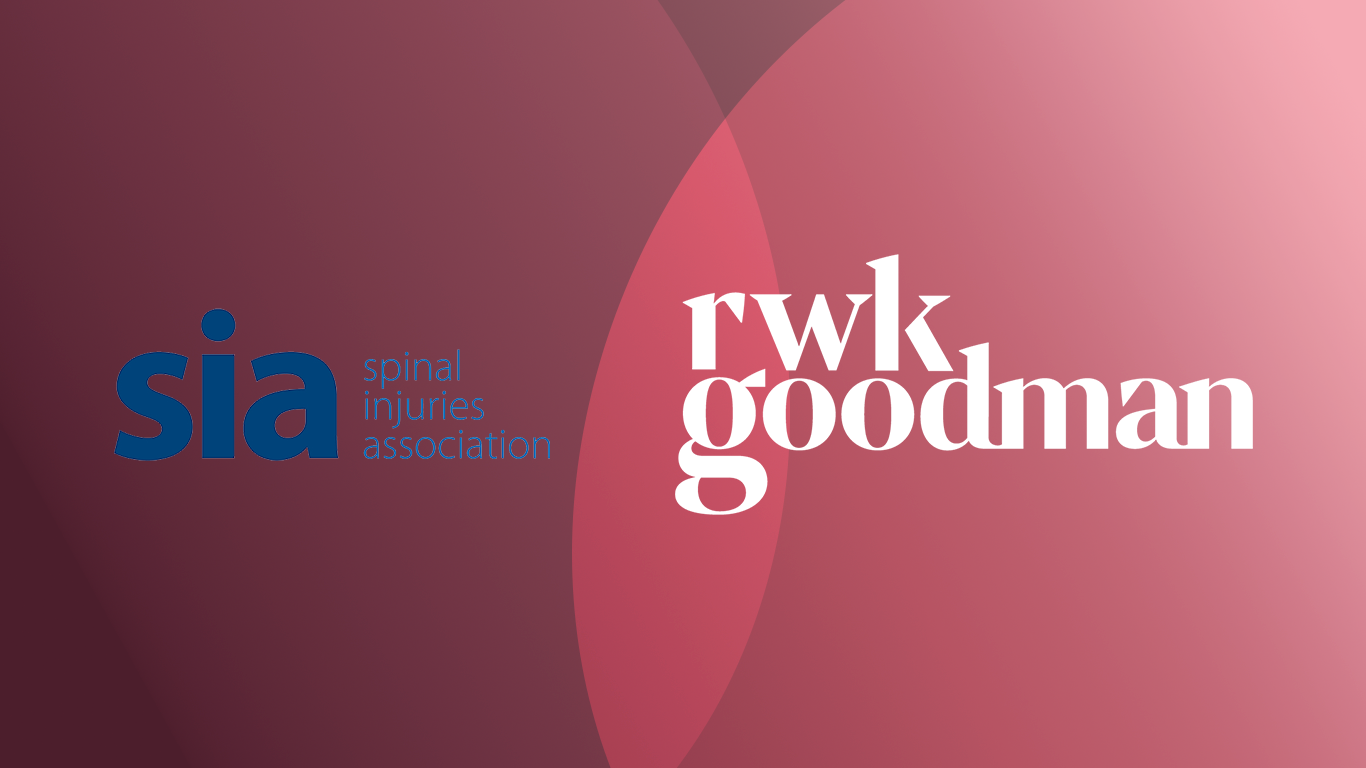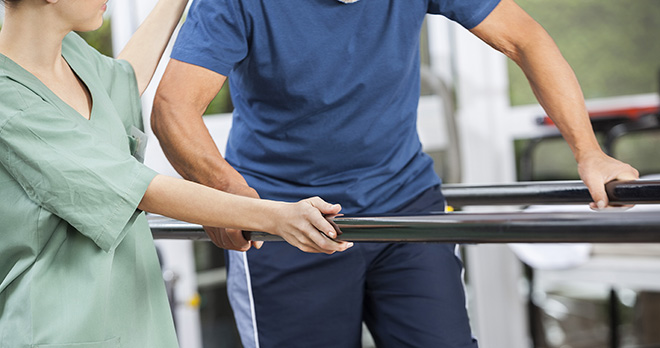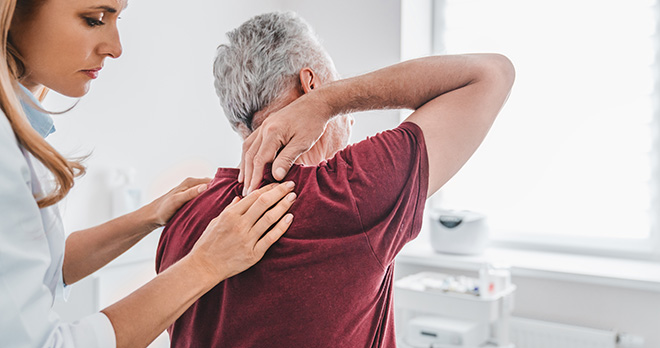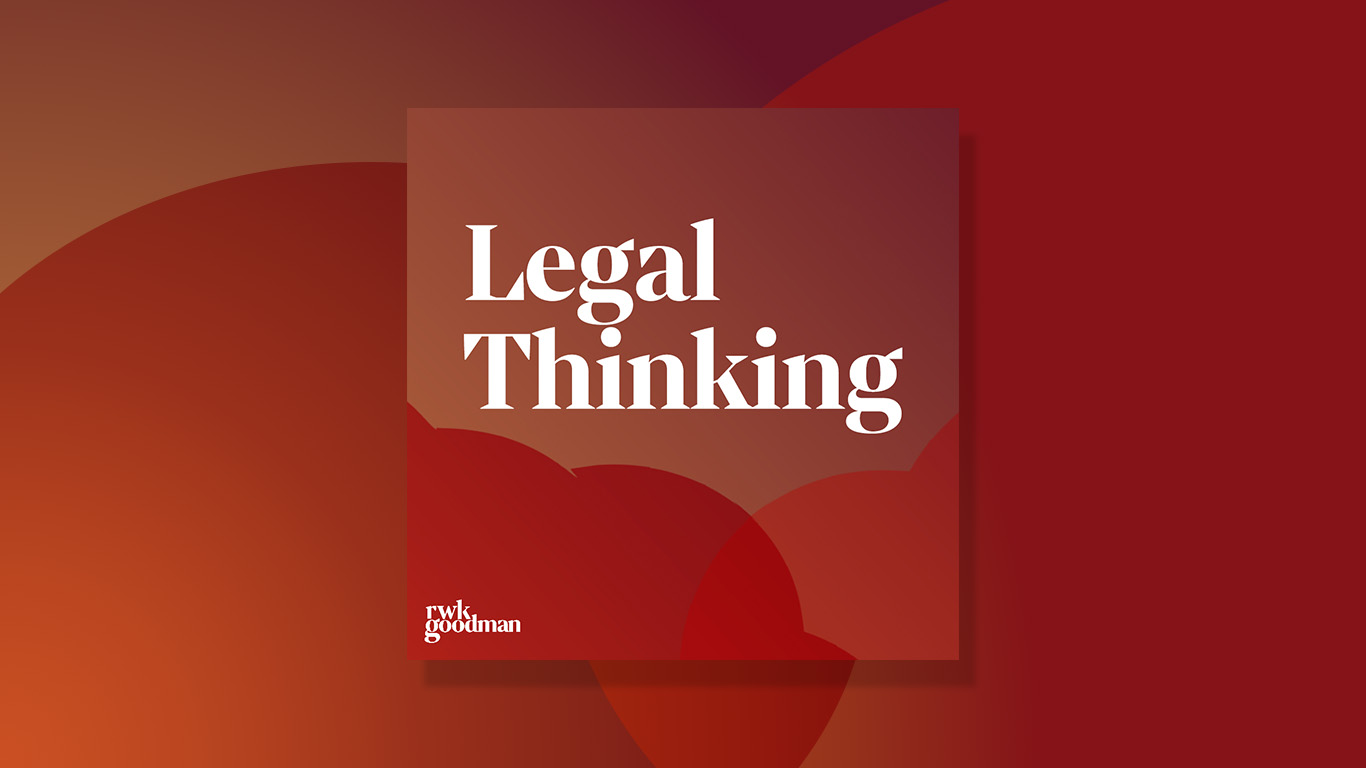Is the new CES pathway working?
This podcast transcript has been edited in places for readability. You can also listen to our podcast on your podcast platform of choice - find it here >
In this episode we're joined by Claire Thornber, Founder of the Cauda Equina Champions Charity, Firas Sarhan, Clinical Education Lead at the National Spinal Injuries Centre at Stoke Mandeville Hospital, and Simon Elliman, Partner and head of our Medical Negligence team, to talk about the outcomes of the Getting It Right First Time report into critical care and how it has changed things for people affected by cauda equina syndrome.
What is the Getting It Right First Time report? What is the latest CES pathway that's been developed as a result?
Simon Elliman: Yeah sure. So the Getting It Right First Time report for spinal services was in 2019 and that report highlighted that some patients with suspected cauda equina syndrome were not being referred for onward care in line with the agreed treatment protocols and that report also showed that more than 20% of litigation claims for spinal injury related to cauda equina syndrome. So I think that rang quite a lot of alarm bells, and in 2021 the Healthcare Safety Investigation Board recommended a national CES pathway which defined safety critical areas and that was the pathway which then came into force, as it were, in February 2023. I think it’s fair to say, I don’t know if you’d agree with this, Claire, that the pathway maybe came in a little bit gradually before that and some of it was in place before that to to some degree. But it was February 2023 when it, when it actually sort of came into force.
So what the, what the pathway does is it creates a kind of two-tier system. So dividing patients, CES patients, between those who need urgent referral and those who need emergency referral and if it’s kind of just urgent, if I can put it that way, then patients would be referred down a pathway to a community MSK which is musculoskeletal interface, which is essentially a physiotherapist. Whereas, if it’s an emergency referral then you get referred to an emergency department and some of the other changes which the pathway brought in related to what constitutes an emergency referral. And the pathway states that you only get on to the emergency referral bit of the pathway if your symptoms have been in place for two weeks or less and I won’t steal Claire’s thunder about that, but I know that she wants to talk about about that because you know, that is a little bit controversial, that period.
Essentially the pathway is aiming to streamline the entire process from someone being suspected of having cauda equina syndrome, right through all of the stages of the process where they may ultimately have decompressive surgery in order to to relieve their symptoms and what it what it goes on to do, it makes very key recommendations about the timing of MRI scanning and the timing of MRI scanning is crucial to the success of the pathway, I think. So it says that MRI scanning should take place within four hours of a request being made to radiology and if the MRI scan is within working hours, it should be reported within one hour and the pathway specifically states that emergency MRI scans for cauda equina syndrome should not be delayed by waiting for discussions with the on call spinal service, shouldn’t be delayed by queuing behind other patients’ routine or elective MRI scans, and shouldn’t be delayed by waiting for a radiologist to report on the scan. And the pathway makes it very clear that emergency MRI scans for cauda equina syndrome should be taking priority over less urgent scans. Also, surgical teams can review out-of-hours MRI imaging to speed up decision making.
And then I think maybe the final thing to emphasise, you know, in terms of treatment of patients with cauda equina is the pathway also sets up a recommendation that all patients who still have ongoing symptoms after surgery, should be referred for follow up to the regional spinal cord unit through the online national referral system. So I think it does kind of a summary of most of the key things that the pathway recommended but you know, the extent to which those things have actually been implemented is maybe a bit more of an interesting question.
So how has the report delivered changed so far?
Claire Thornber: I can give a little bit of insight into that through sort of the patients that we speak to on our helpline. The pathway indicates that patients with the onset of red flag symptoms within 14 days would be the the acute patients that need to be seen to first and MRI scanned. As a charity we’d like to see that timeframe broadened a little bit to perhaps within four weeks, we don’t think it’s quite wide enough.
But moving on from that with regards to MRI scanning, we’re hearing all sorts of different stories. So patients in the pathway it mentions about bladder scanning before an MRI, that that can be helpful to help clinicians make a decision whether a patient is in retention or not or suspected retention because of cauda equina and what’s happening we’re hearing on the phone lines is actually people are having bladder scans. They’re coming back as not been retaining any urine and they’ve been discharged in the hospital. But my point is that if they’re suspicious enough to warrant a bladder scan, surely they should be having access to that MRI scan as well and that the bladder scan is only there as an adjunct. It’s not there as a discriminator for scanning. So that’s a bit worrying.
MRI scans: it’s very hard to get an MRI scan done at the moment within four hours. There’s a problem with resources. There’s massive problems with radiographers being able to perform the scans. So it’s not so much the pathway with regard to MRI scanning, I think it’s the resources available to the people trying to implement the pathway. It’s something that obviously needs review along the way and more input, but there’s different themes coming out for us. So for instance, we’re having patients in some areas having three scans in a week being held up in a district hospital and still not getting to the surgeon until a week later when they’re fully blown cauda equina and complete retention but the three scan positive cauda equina scans sat there waiting. So there’s, overall it’s a good picture. But there are problems, I think, with people understanding or perhaps still maintaining their own pathways, perhaps in their own area. One Trust, one hospital, that stands out really well as a hospital that’s doing great things for cauda equina is St George’s. We’ve had several phone calls from patients who said they’ve been referred from a hospital in the surrounding area and treated and decompressed within 24 hours or whatever they’re doing in St George’s are doing it really well on a positive note.
So just to jump in there, it sounds like it’s less that the pathway isn’t necessarily being followed where it’s in place. It’s just that it’s not in place everywhere. Is that kind of what you’re seeing? They’re just not taking it on or is that, Firas have you got something to put in there?
Firas Sarhan: Yeah I mean, as Claire knows, I’m quite keen on data and in a recent survey by a particular by a firm they stated for NHS hospitals, NHS trusts across the UK and they found that only 20% of NHS hospitals implemented that pathway and 18% actually partially implemented this pathway and 62% has not implemented this yet and this is quite a recent survey and it’s quite an alarming figure in my view. That possibly needs to have more consideration, more attention and campaigning of actually taking this pathway forward and to be implemented across all NHS trusts to really protect the cauda equina patients from any further deterioration and complication as a result of delayed admissions and delayed diagnosis into specialised centre to support them and to educate them on their on their conditions and furthermore, what is alarming is only 40% stated out of these Trusts that there is a lack of access to 24 hour MRI machine, as reasons that they could not implement the strategy and I think that’s quite alarming.
Where it is in place you’ve kind of mentioned some stuff about the bladder retention. Is that the key issue with the pathway as it stands? Is there any other kind of areas for improvement now it’s been in place for a little bit?
Claire: I think there’s, the pathway as it stands sets a high standard, and I think there needs to be resources made available and hospitals obviously as Firas states need to get on board with the pathway and Trusts. I mean if everybody isn’t on board, how can we sort of get a standard across the country that’s a minimum standard of care?
Simon: Yeah it is very much a resources problem I think and something that put that into quite stark focus was, in March of this year, the Royal College of Emergency Medicine issued a position statement which welcomed the pathway but they said it couldn’t formally endorse the pathway because of the significant issues with MRI scanning resource.
So even the the Royal College of Emergency Medicine, they’re kind of saying, “yeah, we want to get behind this pathway, this is clearly the right thing to do”, but they felt that they couldn’t actually endorse it because of the resource. In particular with regard to MRI scanning, it just isn’t in place and the statement went on to say that this leads to an inequity of access to care and also exposes clinicians to claims of clinical negligence. So that’s coming from the Royal College. So it does show really that the the problem is resources and I think you’d probably agree with that wouldn’t you Claire and Firas?
Claire: Yeah, I do agree it’s resources, but I do think the Royal College of Emergency Medicine could have come on board and tried.
You know, there’s a bit of politics going on there, I think.
Firas: But I think also one thing you need to remember, I think this pathway has been endorsed by really all of the professional bodies that is really responsible for the treatment and responsible for the diagnosis of individuals with cauda equina syndrome. And I just mentioned a couple of them: the Society of British Neuro Neurological Surgeons and the British Association of Spinal Surgeon.
And that really is quite key professional bodies endorsing such a pathway for its importance and also for the, I think, the long-term savings for the NHS if that such pathway is being followed and implemented within their Trusts. Because that would look at ways of possibly I would say negligence or or what they call this medical negligence etc. I think that would be really reduced a lot within some within some Trusts.
Claire: It is, to me it seems quite short-sighted and there were 76 stakeholders involved with the with the pathway and they worked on that for 12 months and it was a privilege to be part of that and to think that there’s 60% of them deciding they’re not going to take that advice on board from all those eminent people working to help people. It’s it blows my mind, really.
Simon, just to come to you for a second, how does this affect recent claims from your point of view?
Simon: So yeah, it’s quite interesting because obviously cases that I deal with, they tend to, there tends to be a little bit of a time lag. So I will probably more I’m more likely to be dealing with cases where the actual facts came in before the pathway came in in in February 2023. But I’m definitely we’re definitely seeing some patterns.
I do have a a current case where the actual alleged negligence was in March 2022. So it was just about a year before the pathway officially came into force. But it kind of reinforces some of the relevant issues.
So in this case of mine, the claimant had sciatica and was correctly referred to a musculoskeletal interface and saw a physiotherapist and on the second occasion that he saw a physio, the physio failed to diagnose bilateral sciatica and also failed to diagnose an area of saddle numbness and failed to make an emergency referral, so liability has been been admitted in that case on the part of the physiotherapist and I don’t wish in any way to sort of start saying that musculoskeletal physiotherapists as a group are not capable of diagnosing cauda equina syndrome because obviously obviously they are. But it is kind of an example of how diversion of patients into that side of the pathway, which is kind of the urgent side instead of the emergency side, can lead to missed or delayed diagnosis and so we have seen. I’ve seen that that case is kind of one of the clearer examples of that but we are seeing more cases of clinical negligence against physiotherapists because people are going into that side of the pathway. So I think that’s probably the best example I can give from my practice.
And Claire, are you seeing that with people that come to your charity? Is that a similar kind of story that you're hearing?
Claire: I think what we’re hearing really is that people who perhaps present at A&E who have unilateral or bilateral sciatica and perhaps are not questioned properly about the cauda equina syndrome at the time or they’re dismissed and referred back. A lot of those people are presenting back to hospital within 24 to 36 hours and developing full blown cauda equina syndrome and there again, it’s a gamble with the outcome, the resources, people, what’s available to them to get the surgery they need at that time. But that person was in the hospital ready to be scanned 48 hours earlier.
So it’s the same old story, isn’t it? We’re still seeing a lot of that going on. It’s at what point do you actually accept that there’s enough red flags there to warrant that scan and surgery? You know, it doesn’t. You can’t fix cauda equina syndrome into the the most acute set of symptoms. There has to be flexibility for that onset of the symptoms I think for the best patient outcomes, it can’t be rigid.
What impact does this have on people who experience CES?
Claire: I was talking to this about somebody in the office to somebody in the office today and really it’s we speak to people and they’re like a rabbit in headlights when they come out of hospital. They still don’t know where to go for help and what to do and what in fact is what they’re dealing with. We did a survey with Firas and I think less than 5% of people are actually told by the hospital or a clinical appointment what cauda equina syndrome is and what that means to them. So that means the vast majority are just leaving hospital without the tools or knowledge to help themselves.
What does that mean for somebody? It means that they’re leaving hospital without the support they need. They’ve got massive problems with incontinence, sexual dysfunction, pain, mobility, financial issues with jobs, work, relationships and a lot of them are struggling. They’re struggling alone, unsupported. So that’s got a massive impact on their mental health. So it’s a disaster really and it’s up to us as a charity to try and catch that patient group but we need to get them the NHS on board with us helping to support people.
So I think things are improving very slowly in pre-surgery areas, you know, with getting people perhaps more people to surgery earlier than was happening before in those hospitals that are doing a good job but ultimately post-op is still the same and there’s still a terrible gap there for cauda equina patients.
And Firas and Simon, is that kind of the same thing that you’re seeing as well in terms of the impact that it has on people?
Firas: I think one of the key issues should be on really need to be is to prevent complication development following the actual diagnosis of someone with cauda equina syndrome, because once the individual starts developing complications, their care pathways become more complex and their needs and demands from the health service will actually increase rapidly, and really early diagnosis that will prevent complication development will mean smooth journey of rehabilitation for that individual and again cauda equina syndrome is not just only numbers.
There are actually individuals who have families or who’s a beginning of starting a family, or having a job or having work that they want to go back to, and therefore having a clear diagnosis or the clear pathway of rehabilitation is really an essential, and it’s really a must for these individuals because they all deserve a life and deserve a quality added to this, to this life that will allow them to function normally within within their society or within their community.
Simon: I totally agree. I mean, I think the effect of the pathway not working as effectively as it should and not being adopted by well, as Firas said about 60% of Trusts, is that the end result of that is some patients are still not being operated on quickly enough. And the result of that is poorer outcomes for patients, and sometimes patients who could have made full recoveries, being left with with distressing lifelong symptoms. So that’s the outcome, that’s the outcome we’re seeing of Trusts not implementing this and I guess also to some extent the lack of resource being provided centrally to overcome some of these problems.
Claire: And I think talking about the lack of resource is something that’s come back to mind is over the Easter break, the Easter Bank Holiday, I spoke to two different people from Gobowen in Wales and Hereford, and they developed cauda equina syndrome. But that Bank Holiday weekend there wasn’t a surgeon in the region who was able to operate, so they were delayed significantly and actually had to be transferred over to Birmingham for surgery. So there is a real, real problem of lack of resources and I sometimes ask myself, would you ever be able to implement the pathway nationally for it to work? Is there enough resources there to back it up?
What support is out there for people who do suffer long term disability as a result of delayed treatment for of CES?
Claire: Well, as a charity, we obviously try to offer as much support as we can. So we’re very much focusing on mental health services and clinical psychology, psychosexual psychology, CBT, community events, getting people together so they don’t feel isolated or that the only person who has cauda equina syndrome.
We’re working with Firas to develop respite stays for family members, and we’ve got online family family therapy sessions and ultimately it’s our vision to sort of create a national centre of excellence for cauda equina syndrome rehabilitation and we’re really grateful for Firas coming on board with us, helping us to try and work to achieve that goal. So if you’re a cauda equina syndrome patient and you want support, I think get in touch with us and we’ll try our very best to do everything we can to help.
Firas: And I think I’d like to add to that. I mean, I think our ultimate goal as healthcare professionals is really to have a safe discharge for all of our patients in their own communities and ensuring that there is adequate support, whether that be through their GP or through their community healthcare providers. Whether this is from the NHS or private, as well as really having access to the third parties, which is charities in that case would be the cauda equina champion really to for them to seek the right information and the sort of most up to date information really to support them, within the community or within their home environment.
I think this is quite essential and that should really be the campaign of the Champion Charity for cauda equina is really to encourage all Trusts to actually be part of that pathway and for the NHS itself to provide enough financial resources to allow that. All patients suspected with cauda equina to have their MRI within the first 24 hours of them being seen by a specialist within the Trust.
Are there any other ways of accessing support, perhaps in the community that you might be aware of or or that are in development right now?
Firas: Yes. The Cauda Equina Champions Charity is really in the process of developing an app and that app really is to provide the patient relatives and professionals with necessary and essential information for for them about managing patients with cauda equina and also for the patient relatives, how to actually manage themselves within the home environment and how they can sort of access and understand their condition in a much better way, that will help and support them. Possibly early identify if there is any complications might be developed as a result of their condition and again, this is really part of the GIRFT pathway is really to involve in training and development and education and hence why having a section within our app for professionals really, for us to bring them the resources to actually allow them to have possibly correct diagnosis of the patients and support them with the latest research and work that’s been done within the area.
I think also it is essential for the patient to to be able to record and document some of the the signs and symptoms they’re actually having while they’re experiencing cauda equina or pre-diagnosis and so on, so they can share this information with their GP or with their medical staff or with their professionals, to really allow early diagnosis and smooth diagnosis of actual patients.
And again, as we all know that since Covid hit us, there is more and more reliance on technology and innovative ways of actually accessing information and we’ve done recently a survey where we surveyed about 379 individuals with cauda equina, and the majority said that they heavily rely on the internet – and we all know about the information on the internet! Some of it is not really valid and not reliable, and that by itself could cause more confusion to the individual and their and their relatives. And hence we want to deliver and develop this app to actually provide them with the correct information that could help them and really could actually enhance their understanding and therefore have informed patient, an individual about their condition for them to access the appropriate health care needs and to access the care packages that they might be required.
Claire: I think it’s very important. I think it’ll be groundbreaking really, for cauda equina patients. They’ll be empowered. They’ll have the knowledge at their fingertips. They’ll have a lot more confidence when dealing with healthcare professionals and ultimately the education about the condition will just go a long way to make their lives a lot better. So it’s a really exciting project and hopefully we’re looking towards before Christmas, aren’t we Firas, to launch the app?
Firas: Definitely and I think also we’ve done also another survey really looking at what sort of areas you need to be covered within the app itself and it’s really quite essential to look at the the thing that they want to know. For example, they want to know the net physiology of the body and the spine and the nervous system and how it actually works. Looking at the nervous system itself, looking at the vertebral spine and the musculoskeletal system and other issues that are linked and associated with cauda equina like renal function, digestive system, reproductive system, skin following cauda equina.
I think these really these are quite essential problems that they actually want to know and they want to seek for or in order for them to have correct information and adding to that also they want to learn more about their skin, their bladder, their bowel, their sexuality and also about their the motor and sensory function post cauda equina. And again, this really shows that we are dealing with quite a hungry group of individuals who are wanting to know more information about their condition and sort of take it from really the reliable resources that could really give them information with confidence.
Okay. Thanks everyone, and thank you very much for your time.
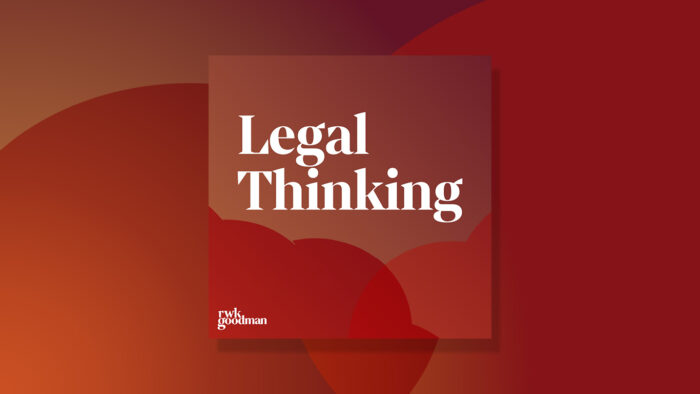
Subscribe to Legal Thinking
Want to hear more from our podcast?
Find out where you can subscribe and check our our back catalogue right here on our website.
Contact our team to find out whether we can help you make a claim for compensation.
Call now
More insights from our spinal injury team
View more articles related to Cauda equina claims, Spinal Injury and Spinal surgery
